Did you know Mexico City is one of the most culturally diverse places in the world? In this series I’m grouping the most important sites by geographical proximity, so that you can choose which days you can do!
In the first article of this series about Mexico City I covered the basics for the busy professional who just doesn’t have the time to plan his trip (most of my clients).
Now we start to have some cultural travel fun!
Though in all fairness Mexican culture is so much vaster than what I may convey here (and that includes food which I won’t cover) these are my recommendations for the busy professional who doesn’t have time to plan.
 As I said in the previous article, I’m going to concentrate in four sectors of the city because of two reasons:
As I said in the previous article, I’m going to concentrate in four sectors of the city because of two reasons:
- To make the most of transportation in the city by seeing close by attractions on the same day, at a comfortable place.
- To allow you to choose the “days” that resonate with you the most, according to your interests and the time you have available.
Day 1 in Mexico City: Chapultepec
Day 1 of this Mexico City guide will cover two very important aspects of Mexican life: Their history and art. We’ll see the area called Chapultepec in the borough Miguel Hidalgo.
Start at the top of the Chapultepec Hill:
Chapultepec Castle
The Chapultepec Castle is today the site of the National Museum of History.
But in the 19th century, it was the royal residence of Maximilian I (1832-1867), a Habsburg Prince who was appointed Emperor of Mexico for a few years.
With the complex political situation at the time, the United States trying to take over Mexico in a conflict with France, the political powers in the country and a very strong Liberal Party lead by Benito Juárez, Maximilian I was misled into the Emperor position.
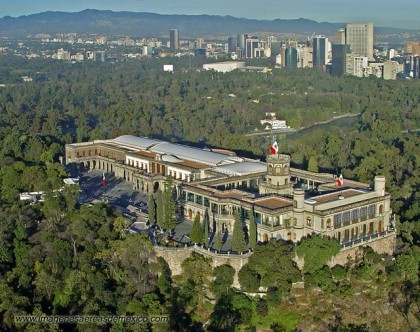
Aerial view of the Chapultepec Castle. Photo: www.mexicovacationtravels.com
The story of Maximilian I and his wife Charlotte of Belgium becomes tragic when he is executed and she suffers a mental breakdown which causes her to be ill for the rest of her life.
You can read the full story here, in my article The Habsburg Prince and the Chapultepec Castle.
The castle is a gorgeous building built in 1785 that has been restored to look as it did in the time of the Emperors.
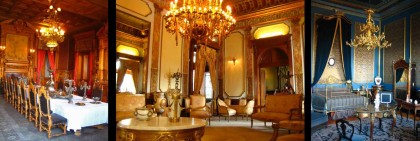
Interiors of the Chapultepec Castle. Photo: worldrollup.blogspot.com
It’s atop the Chapultepec Woods and you can climb up the ramp (it’s not that hard), or take the carts that get you there.
Here’s the Official website of the Chapultepec Castle. Fee is $5.
Museo de Arte Moderno
El Museo de Arte Moderno is located just a few minutes down on foot from the Castle. The collection focuses on Mexican Art of the 20th century until now including painting, photography and drawing.
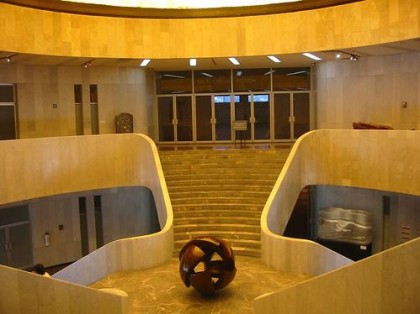
Museo de Arte Moderno. Photo: elsilenciero.com
Of course, the most famous of its works of art are those of the Mexican Muralists Diego Rivera, David Alfaro Siqueiros, José Clemente Orozco y artists such as Frida Kahlo and Juan O´Gorman.
I must confess I am fascinated by the life and work of Diego Rivera and his wife Frida Kahlo and my favorite piece at the museum is the painting of The Two Fridas.
The Two Fridas is a painting by Frida Kahlo, made during the time of her divorce of Diego.
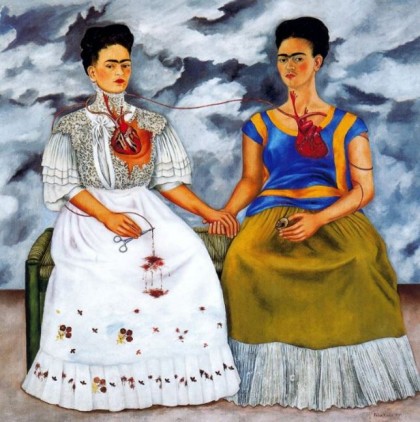
The Two Fridas. Photo: dailyvisualinspiration.wordpress.com
It depicts (not surprisingly) two Fridas, the Mexican Frida that Diego preferred and the European Frida, a reference to her German and Spanish roots.
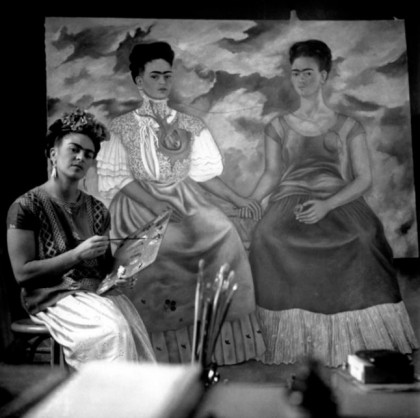
Photo of Frida painting The Two Fridas, by Nickolas Muray. Source: artblart.com
I intend to do a post about Diego and Frida in the future.
Official website of the Museo de Arte Moderno. Fee is $2.
Rufino Tamayo Museum
Walking on Mahatma Gandhi street, crossing Paseo de la Reforma, you can find the Rufino Tamayo Museum.
Though this museum takes the name of Mexican muralist Rufino Tamayo, it is really a contemporary museum.
If you’re into art of the present, this is the place to visit in Mexico City.
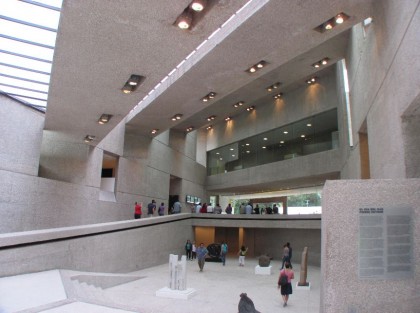
Museo Rufino Tamayo. Photo: chilangomex.wordpress.com
Here’s the official website of the Rufino Tamayo Museum. Fee is $1,50.
Museo Nacional de Antropología
Coming back on Mahatma Gandhi street until Paseo de la Reforma and then walking about half a block west, you’ll find the MNA.
The National Museum of Anthropology is, in my opinion, the biggest gem in Chapultepec. This incredible museum houses the most impressive collection of Mexican pre-columbian artifacts.
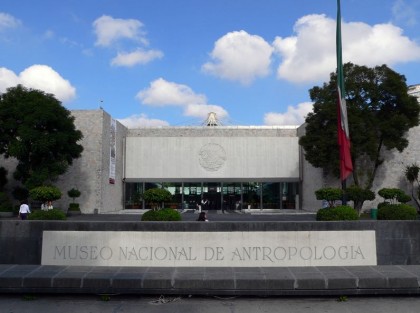
Museo Nacional de Antropología. Photo: Wikipedia, kornemuz.
Please copy and paste the following link to go to the original image:
http://en.wikipedia.org/wiki/File:Musee_National_Anthropologie-Entree.jpg
Its 23 rooms are organized by cultures, including Toltec, Mexica (Aztecs), Olmeca, Maya and more.
You can really see how diverse the indian pre-hispanic cultures of Mexico were and are and start to understand the richness of their culture.
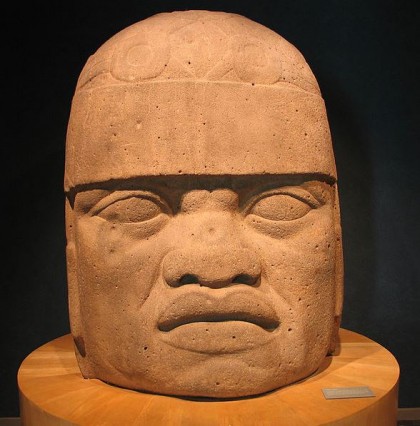
Olmeca head. National Museum of Anthropology. Photo: Wikipedia, Luidger 29.
Please copy and paste the following link to go to the original image:
http://en.wikipedia.org/wiki/File:20041229-Olmec_Head_(Museo_Nacional_de_Antropología).jpg
For instance, contrary to common belief, the ancient city of Teotihuacan (where the giant pyramids are) was not an Aztec city per se.
It was most likely a conglomerate of different Mexican ethnicities that overlapped over time. You could write entire encyclopedias about the Mexican civilizations and I’ll probably go deeper in later articles.
You can spend hours and hours at this magnificent museum. Its architecture alone is astonishing, punctuated by “el paraguas” (the umbrella) in the middle of its inner square featuring an artificial cascade.
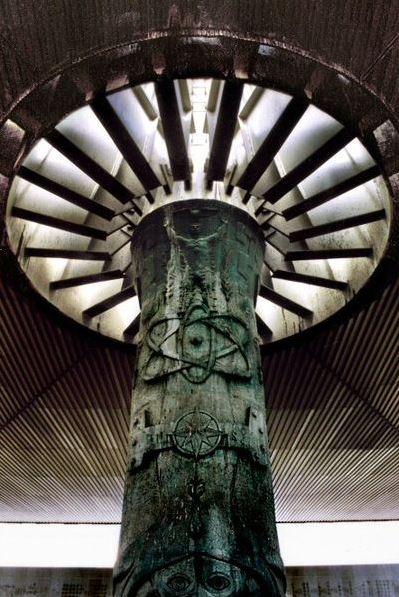
Museo Nacional de Antropología, El Paraguas. Photo: Wikipedia, Yo, I.
Please copy and paste the following link to go to the original image:
http://en.wikipedia.org/wiki/File:Museo_nacional_de_antropologia_entrada.jpg
Don’t miss the famous Stone of the Sun (Aztec “Calendar”) and the model of the city of Tenochtitlan (modern day downtown Mexico City).
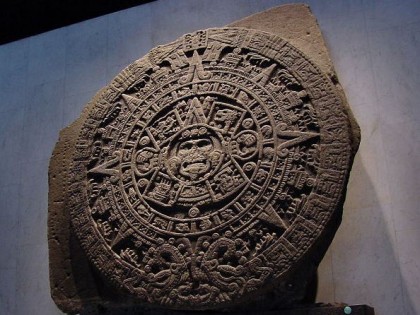
Aztec Calendar Stone. Photo: Wikipedia.
Please copy and paste the following link to go to the original image:
http://en.wikipedia.org/wiki/File:Aztec_calendar_stone.jpg
Here’s the official website of the National Museum of Anthropology. Fee is $5.
Ok, those are my suggestions for a day in Chapultepec. What do you think?
I’m not done yet, there is still so much more to see, so much more to add to this Mexican culture trip.
Come back for the next installment in which we’ll see more of the art of Mexico, more of the history and even a few Mariachis!
Did you know Mexico was so diverse that it had art, pre-hispanic history and 19th century history nearly on the same site?
Which of these attractions seems the most interesting to you?
Let me know in the comments below or join me in Facebook!



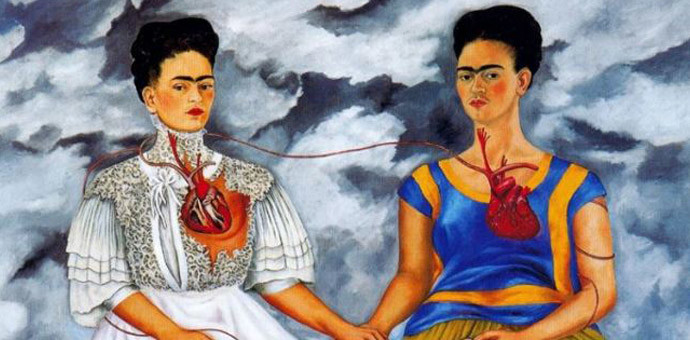
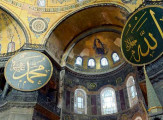
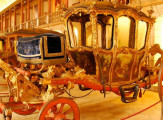
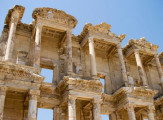
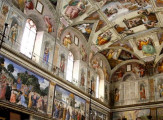
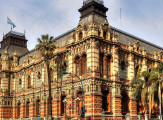
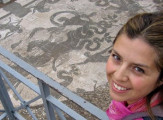
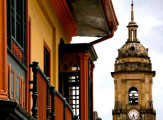

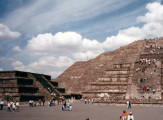
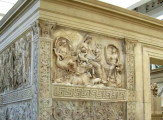


















Leave a Comment
Want to join the discussion?Feel free to contribute!